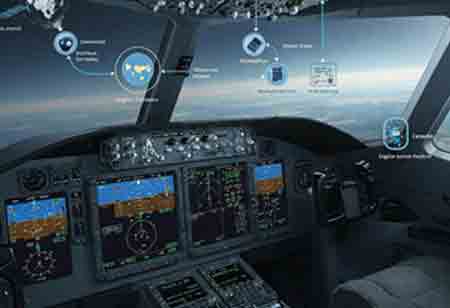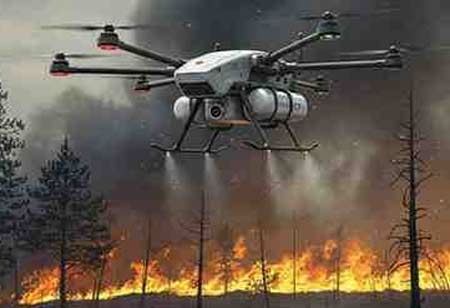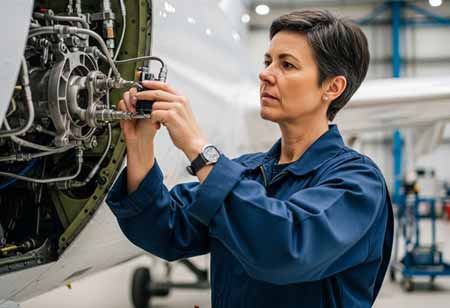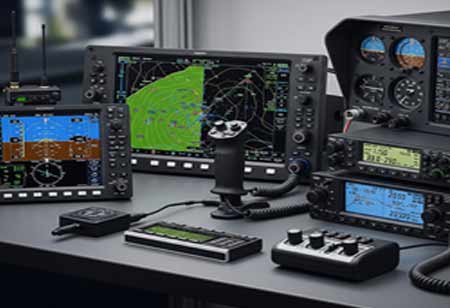The aviation sector is transforming, driven by digitalisation, evolving passenger expectations, and the need for operational efficiency. In Europe, the push for greener aviation heightened air traffic, and the modernisation of aerospace fleets rapidly accelerated the demand for advanced connected avionics. As aircraft become increasingly autonomous and digitally reliant, avionics systems and top companies in avionics are evolving from static control tools to dynamic, data-driven platforms that power the cockpit of the future.
AI-enabled predictive maintenance allows operators to detect anomalies in engine performance, avionics modules, or environmental controls, thus reducing downtime and avoiding costly mid-flight failures. In defence, avionics enable secure communication, threat detection, mission planning, and navigation in GPS-denied environments. Across sectors, connected avionics serve as the nerve centre of the aircraft, linking various subsystems to ensure seamless operation and rapid response to evolving conditions.
Driving Innovation Through AI
The region's most prominent strategic emphasis is aviation safety, regulatory compliance, and sustainability. Agencies are mandating next-generation air traffic management solutions to reduce congestion, emissions, and flight delays. The regulatory pressures are prompting airlines and aircraft manufacturers to invest in digital avionics systems that support real-time communication, predictive maintenance, and efficient route planning. European airlines, particularly flag carriers and low-cost operators, are replacing ageing aircraft with newer, digitally advanced models.
The modern aircraft come equipped with cutting-edge avionics architectures that integrate with satellite navigation, flight management systems, and cockpit display units. The transition to all-electric aircraft and hybrid propulsion systems championed by initiatives necessitates next-generation avionics to monitor and control electric components, battery systems, and integrated health monitoring. AI plays a pivotal role in this new avionics era. AI-powered avionics systems enhance situational awareness and decision-making by analysing vast data from sensors, satellites, and ground control systems.
AI-driven decision support tools assist pilots with optimal flight path recommendations based on weather data, fuel efficiency goals, and traffic conditions. Virtual co-pilots, powered by natural language processing, help pilots manage tasks, respond to alerts, and access flight manuals in real-time. AI supports autonomous flight capabilities, laying the foundation for single-pilot or even pilotless commercial aviation in the long term. Connected avionics systems have broad applications across civil, commercial, and military aviation.
Future Focus: Navigate Challenges
The European avionics market is seeing key trends, including improved accuracy and redundancy for operations in low-visibility settings. Modern avionics favour modular, software-defined architectures, allowing quick updates and integration with third-party systems. However, as aircraft become more interconnected with satellites and cloud systems, they face greater cyber threats.
European defence and civil aviation stakeholders are implementing robust cybersecurity protocols, including AI-based threat detection, secure communication protocols, and real-time anomaly detection systems to safeguard avionics data and infrastructure. Aircraft operated by different airlines across various regions often use heterogeneous avionics systems. Ensuring these systems can communicate while complying with regional and global standards is complex. Lack of standardisation can hinder data-sharing, delay innovation, and increase costs.
Avionics systems must comply with strict safety certification guidelines, which can hinder innovation and delay the market introduction of AI-powered products. Many European carriers and regional airlines still use legacy aircraft that lack the infrastructure for advanced avionics, requiring costly retrofitting. The aim is to create a unified digital airspace in Europe by harmonising data protocols, navigation systems, and communication platforms.
Developers use modular certification approaches, where individual AI components are certified independently before integration. It accelerates deployment and allows for continuous improvement. Using digital twins virtual models of avionics systems enables developers to test AI algorithms in a simulated environment, reducing risk and expediting certification. Governments and aviation authorities offer grants and tax incentives to encourage retrofitting with updated avionics. These initiatives extend aircraft lifespan and improve safety and environmental performance across the fleet.
Strategic Importance in Flight Safety
The impact of connected avionics systems on the European aviation sector is profound. They enhance flight safety, operational efficiency, and passenger experience. AI-enhanced avionics optimise fuel consumption, reducing greenhouse gas emissions and supporting Europe's climate goals. For airlines, connected avionics offer a competitive advantage. They enable more reliable scheduling, proactive maintenance, and enhanced fleet management, all of which contribute to cost savings and customer satisfaction.
Global air traffic is expected to rebound and grow steadily through the next decade. Managing the increased volume of aircraft safely and efficiently will require advanced avionics systems that can dynamically interact with evolving traffic control environments, especially within Europe's dense airspace. Connected avionics will become the digital backbone of next-generation aircraft. The ability to harness AI, integrate with cloud and satellite systems, and operate across civil and military domains makes them indispensable to the future of aviation.
European aerospace companies, regulators, and tech providers must continue investing in collaborative R&D, regulatory innovation, and cybersecurity infrastructure to fully unlock the potential of connected avionics.









